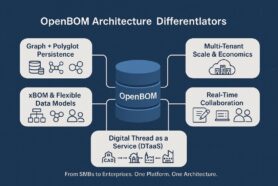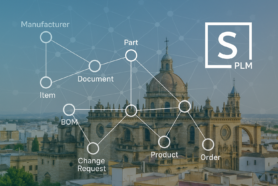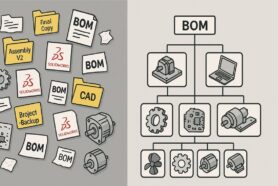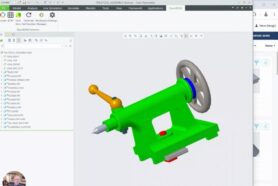
In today’s complex product development landscape, managing engineering data across distributed teams poses significant challenges. Engineering teams often struggle to coordinate changes, maintain data consistency, and ensure effective communication. Moreover, product information spans multiple disciplines—mechanical, electronics, software, and business systems—including engineering, procurement, and supply chain data.
Two typical use cases highlight these struggles: first, how to make engineering and related product data available to everyone in an easy form with views, searches, sharing, and exports; second, how to coordinate changes in a complex environment with dependencies across multiple disciplines and business systems.
A traditional approach of the last 2-3 decades is to rely on documents and various derivative formats. CAD files coming from MCAD, ECAD, and other systems. Derivatives such as STEP, PDF, etc. A single source of truth idea sold as a PDM (and later PLM) solution locked the variety of the information in the database and file vault and controlled who could get access and make a change.
What became typical for those systems is a process “check-out” (literally means take the file), then make a change and “check-in” (return it back). While the process it created was very formal, a growing complexity of product information and complexity of changes (not all changes are the same, not each change requires to increase in the revision, and some changes need to happen in parallel to make the engineering process more efficient).
How to make the work more efficient by ensuring the right data is instantly available to everyone (not via emails with attachments) and how to coordinate change management to include everyone and save time for communication and data updates?
This is where we need to have a paradigm shift to move from central files/folders location to a collaborative workspace paradigm. The need to move from a traditional document management and a PDM system that manages files with check-out/in process to a model with operational efficiency including the following key principles (1) instant data sharing, (2) collaboration in real time; (3) entire lifecycle change process (not silos).
Actually, the paradigm shift I’m talking about is here. It started with Google Docs more than 20 years ago. Google Docs ditched the “save” button and allowed everyone to collaborate seamlessly by accessing the data via browsers.
At OpenBOM we like the “collaborative workspace” paradigm and developed a platform that can centralize structured product and engineering information with all relations and allows all users to access it seamlessly and effortlessly, to perform changes and keep track of the history. We also made it seamlessly integrated with other systems (CAD, PDM, ERP, CRM, etc)
Let’s discuss details about how OpenBOM does it.
A Flexible Data Model: The Foundation of Centralization
OpenBOM’s flexible data model serves as the cornerstone for centralizing engineering data. This model allows companies to create a comprehensive digital Bill of Information (BOI), acting as a single source of truth for all product information.
By centralizing data, OpenBOM reduces duplication, improves accessibility, and enhances data governance capabilities. Teams can rely on accurate, consistent information to drive their product development processes.
OpenBOM is a software solution that uses modern polyglot persistence data management architecture including GraphDB to manage flexible relationships between data model elements.
Seamless Integration: Bringing Data Together
OpenBOM’s seamless integration with various CAD and engineering tools is crucial for effective data centralization. This integration enables automatic data capture from multiple sources, eliminating the need for manual data transfer and reducing errors.
By supporting both desktop and cloud-based systems, OpenBOM ensures that all engineering data can be easily centralized, regardless of its origin. This flexibility allows companies to maintain continuity while modernizing their data management workflows.
Collaborative Workspace: Enabling Real-Time Teamwork
The heart of OpenBOM’s approach is its collaborative workspace. This digital environment allows multiple users to contribute simultaneously, applying changes to product data without traditional file-locking constraints. The foundation of OpenBOM collaborative workspace is a collaborative grid user experience that allows multiple users to perform actions simultaneously and automatically capture changes. Combined with a flexible data model and access control it gives a unique environment you can configure from a specific company data.
Think of it as a “Google Doc on steroids” for product data management, enabling real-time updates and collaboration across distributed teams. This functionality eliminates bottlenecks and helps engineering teams to work faster, capture changes in real-time, and keep all users aligned.
Smart Sync and Collaborative Lock: Balancing Local and Cloud
OpenBOM’s innovative Smart Sync and Collaborative Lock mechanisms strike a balance between cloud-based centralization and local file access. This approach allows teams to work with local files when needed while maintaining centralized control and preventing accidental overwrites.
By combining the advantages of local and cloud-based data management, OpenBOM empowers teams to work efficiently in any environment.
Benefits of Centralization Through a Collaborative Workspace
- Improved Accuracy: A common workspace allows multiple users and teams to collaboratively work on changes, ensuring all stakeholders have access to the most accurate and up-to-date information.
- Accelerated Processes: OpenBOM eliminates bottlenecks caused by separate systems and complex dependencies, allowing teams to work concurrently without blocking each other.
- Scalability: The platform brings together multiple disciplines and dimensions of data, enabling teams to manage complex projects with ease.
- Automatic Traceability: All changes are captured seamlessly and effortlessly, providing a clear audit trail for decision-making and compliance.
- Intelligence: OpenBOM recombines data from traditionally isolated silos, enabling richer insights and more informed decision-making.
How OpenBOM Collaborative User Interface Works
In the following picture you can see an example of collaborative user interface in OpenBOM, which can remind you of Google Sheet, each element of this grid is a part of OpenBOM’s flexible data model, which can be a different data type including links, files, and references to other systems.
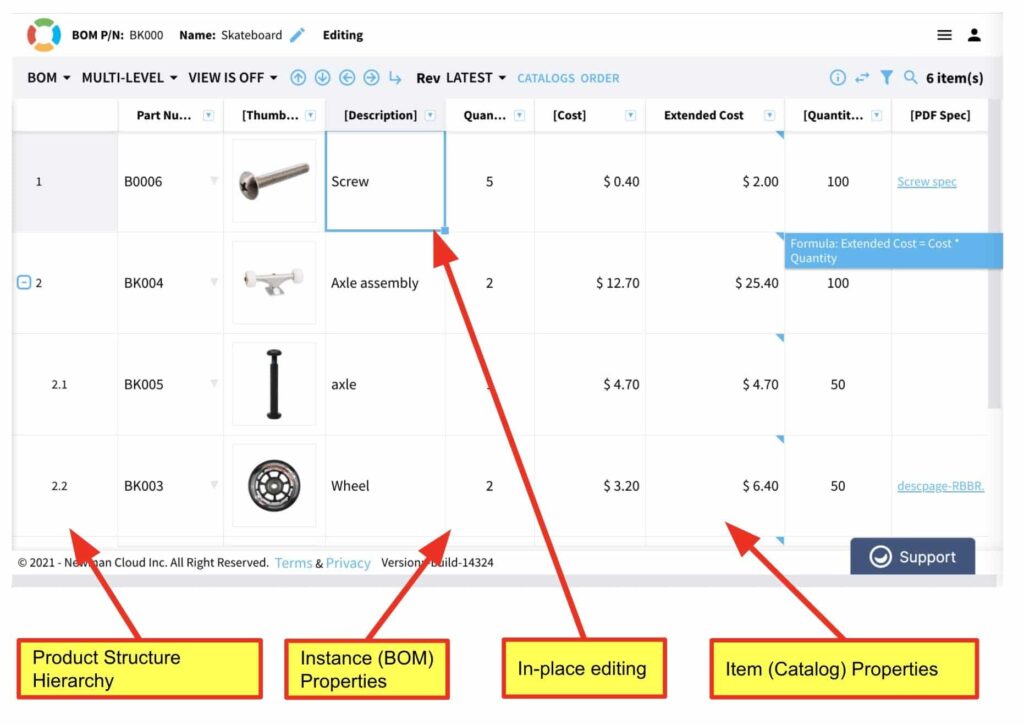
Watch the following demo of OpenBOM to give you an idea of how it allows multiple teams and people to work together.
Collaborative Workspace with multi-disciplinary BOMs (mechanical, electronic, software)
Collaborative Workspace with contractors and suppliers.
Collaborative Workspace integration with ERP (example of NetSuite)
Conclusion
By centralizing engineering data through a collaborative workspace, OpenBOM empowers teams to work more efficiently, reduce errors, and accelerate product development. This approach represents a significant leap forward in product lifecycle management, providing a unified platform for engineering teams to collaborate, innovate, and excel in today’s competitive landscape.
The approach we developed at OpenBOM accelerates a broad range of processes in your organization such as product data management, BOM management , procurement process, supply chain collaboration, and sharing data across multiple organizations in a value chain. It is an important tech for modern PLM software and it is a foundation for future implementation of artificial intelligence in product lifecycle management.
If you’re thinking about how to improve your engineering and production process using OpenBOM technology, we can consult you on how to do it using OpenBOM strategic thinking and integration technologies and a unique collaborative user experience making the data easily available to everyone who needs it.
REGISTER FOR FREE and check out the OpenBOM collaborative environment today.
Best, Oleg
Join our newsletter to receive a weekly portion of news, articles, and tips about OpenBOM and our community.


